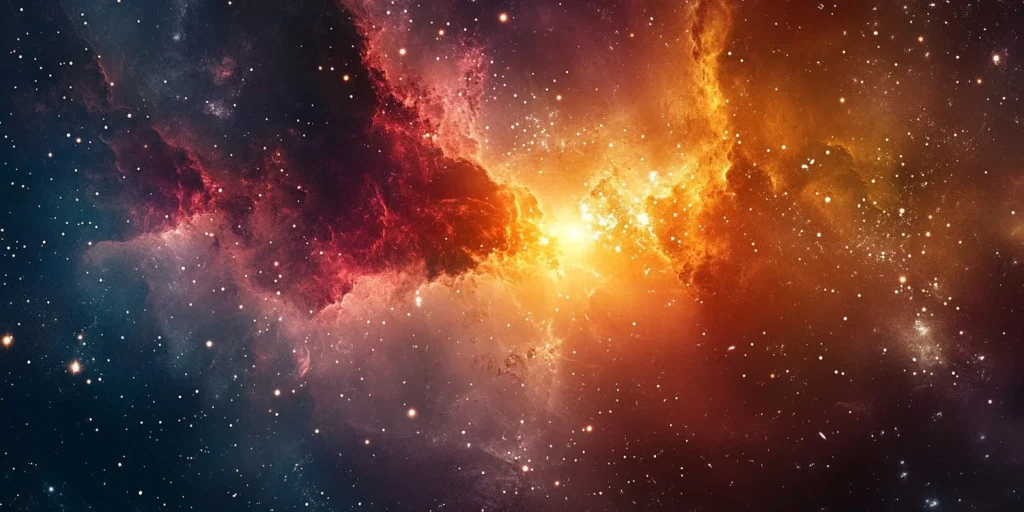A Geometric Approach to Cosmological Redshift Using Angular Geometry in a Static Universe

A Geometric Model of Cosmological Redshift via Angular Geometry in a Static Universe
Exploring a Geometric Model for Light Redshift
Abstract
This article presents a new geometric model to account for the redshift observed in light from distant celestial bodies, challenging traditional concepts of cosmic expansion and gravitational redshift. By analyzing the angular relationships between the light source, an observer, and a fixed reference point situated “above” the observer, we illustrate how geometry can account for the wavelength increase—an apparent redshift—as distance grows. The model constructs various triangles to demonstrate this concept while positing a static universe that purely attributes the redshift to geometric influences. This unique perspective may prompt a reevaluation of established cosmic assumptions.
Introduction
The cosmological redshift is a critical phenomenon in astrophysics, signifying that the light from distant galaxies shifts towards longer wavelengths. Conventionally, this redshift is tied to the universe’s expansion, a key principle underpinning the Big Bang model. Hubble’s Law, which correlates a galaxy’s redshift with its distance from Earth, has solidified the concept of an expanding universe.
However, alternative theories that do not rely on cosmic expansion could yield fresh insights into the universe’s architecture and the origins of observed cosmic phenomena. This paper introduces a geometric approach grounded in triangle geometry to interpret redshift effects within a static cosmos. By scrutinizing the angular configurations involving sources of light, observers, and a reference point, we argue that geometric properties alone can yield observable wavelength shifts.
Geometric Framework
Our geometric model is founded on three core principles:
1. Static Universe
The assumption here is that the universe remains static; it does not expand or contract over time. This underpins our argument that observed redshift effects can be ascribed to geometric factors rather than cosmic dynamics.
2. Straight-Line Light Propagation
The assumption posits that light travels in straight lines through space, unless altered by gravitational forces. This simplification allows us to employ classical Euclidean geometry, facilitating easier computation and interpretation.
3. Angular Geometry
We assert that the redshift emerges from the geometric arrangement of the light source, observer, and a reference point. By analyzing how the angles and lengths in this configuration adjust with distance, we can link these geometric changes to observed wavelength alterations.
Triangle-Based Redshift Mechanism
Triangle Construction
To model the geometric relationship between the light source, observer, and the reference point, we construct a right-angled triangle:
-
Vertices:
- ( S ) (Source): The distant celestial body emitting light.
- ( O ) (Observer): The point of light detection (e.g., Earth).
- ( P ) (Perpendicular Point): A point at a fixed perpendicular distance ( h ), directly “above” the observer and forming a right angle at ( O ).
-
Sides:
- ( d ): The horizontal distance between the source ( S ) and the observer ( O ).
- ( h ): The fixed perpendicular distance from observer ( O ) to point ( P ).
- ( L ): The hypotenuse connecting source ( S ) to point ( P ).
Angle at the Source (( theta ))
- Definition: The angle ( theta ), formed at the source ( S ) by sides ( d ) and ( L ), changes as ( d ) increases.
- Behavior: As ( d ) increases, ( theta ) decreases, elongating the triangle shape.
Effect on Wavelength
We hypothesize that the extension of the hypotenuse ( L ) correlates to an effective increase in the light’s travel path and thus influences the observed wavelength.
- Mechanism: A smaller angle ( theta ) at the source generates a longer hypotenuse ( L ), resulting in a stretching of the observed wavelength, thereby producing a redshift.
Mathematical Representation
1. Triangle Relations
In our right-angled triangle with sides ( h ), ( d ), and hypotenuse ( L ):
[
L = sqrt{d^2 + h^2}
]
[
theta = arctanleft(frac{h}{d}right)
]
2. Wavelength Stretching Mechanism
We propose that the observed wavelength ( lambda_{text{obs}} ) relates to the effective path length ( L ) through the following equation:
[
lambda{text{obs}} = lambda{text{emit}} left(1 + frac{Delta L}{L_0}right)
]
- Definitions:
- ( lambda_{text{emit}} ): The emitted wavelength from the light source.
- ( Delta L = L – L_0 ): The variation in hypotenuse length compared to a reference length ( L_0 ) at a reference distance ( d_0 ).
- ( L_0 ): The hypotenuse’s length at the reference distance.
3. Redshift Expression
The fractional change in wavelength, or redshift ( z ), is defined as follows:
[
z = frac{lambda{text{obs}} – lambda{text{emit}}}{lambda_{text{emit}}}
]
Conclusion
In summary, we have introduced a geometric model that explains the cosmological redshift without invoking the standard notions of cosmic expansion. By analyzing the geometric relationships between light sources and observers, our model offers a fresh perspective on how distance and geometry can affect light’s wavelength. This approach not only invites scrutiny of the established Big Bang framework but also encourages the exploration of alternative interpretations of our universe’s structure. By emphasizing geometric factors, we can enrich our understanding of cosmology and the fundamental principles governing light.
This exploration fosters a call for further investigation into non-expanding models of the universe and their implications for astrophysics. The insights gained may lead to revolutionary shifts in our grasp of cosmic phenomena, echoing the importance of questioning and revising longstanding scientific paradigms.
Thanks for reading. Please let us know your thoughts and ideas in the comment section down below.
Source link
#Geometric #Model #Cosmological #Redshift #Angular #Geometry #Static #Universe





